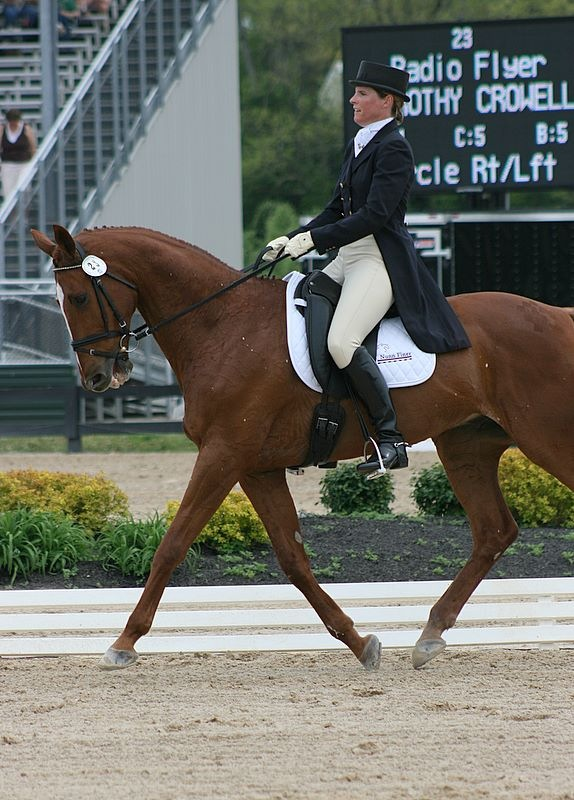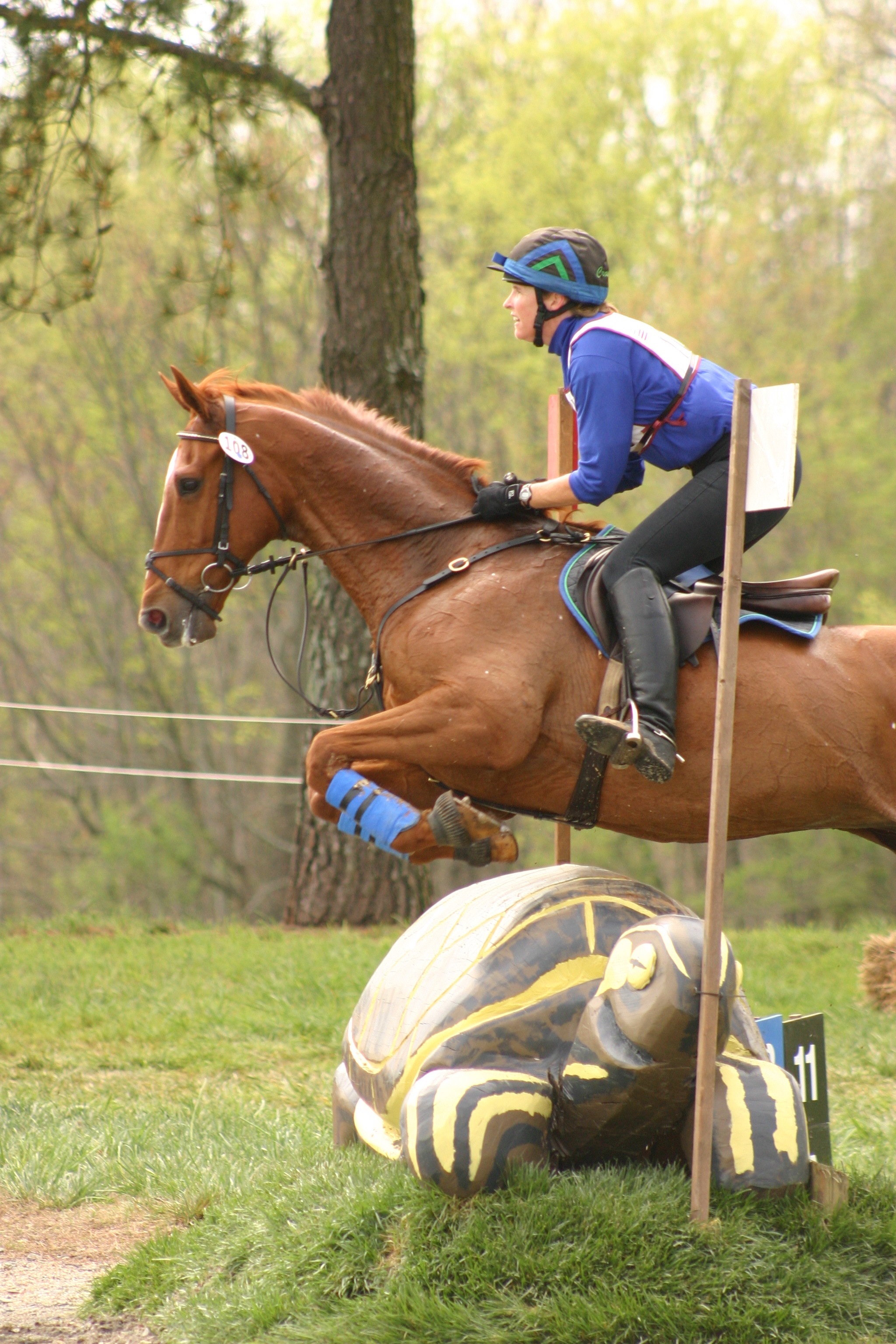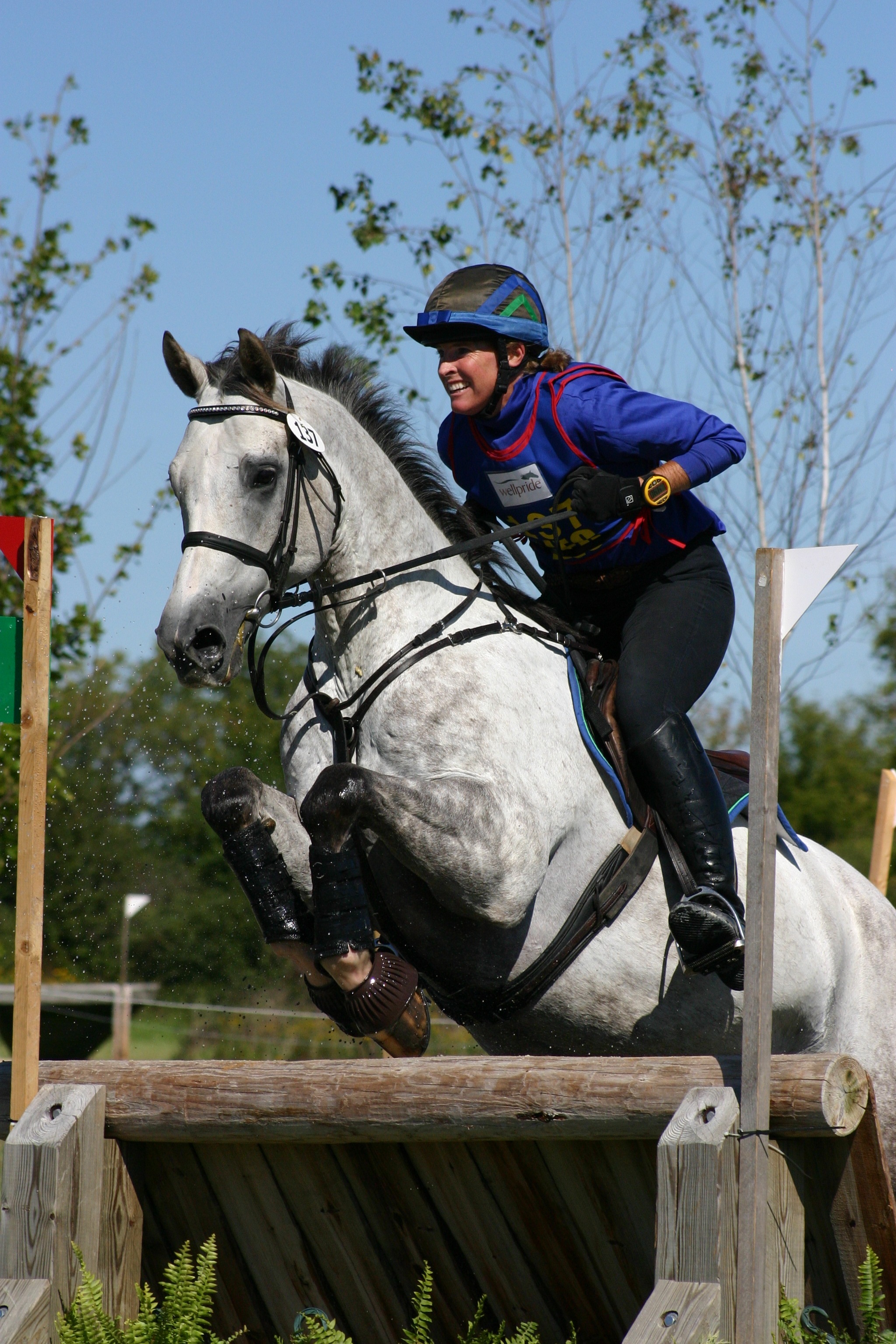It's A Different Sport

Dorothy Crowell, a long time upper-level eventer, a recent competitor at Rolex Kentucky Three-Day Event, and level 4 ICP Instructor, shares her views on eventing these days.
(Editor’s Note: New Addendum added at the bottom)
The focus on improving our dressage and show jumping is, as always, necessary. The change to our qualifications has forced us to focus more than ever before on our flat work both in the rectangle as well as over fences. Over the past 10 years there has been a marked improvement in both. Our best can now hold their own in pure dressage, and be competitive in show jumping. Any one who has attempted eventing knows that it is the constant quest to be good at all three phases that keeps us ‘old fogies’ trying long past the age of graceful retirement. Similar to the plight of an individual rider, our nation is presently dealing with the frustration of watching our strength become our weakness. Though prowess in dressage and show jumping can improve cross country, it is a different sport.
Excellent cross country riding is a talent all on it’s own; a particular mix of race riding and show jumping. Think of the many really good cross country riders that were not known to be particularly talented on the flat! Why? Because cross country riding is the #1 sport of the three different sports that event rider try to master. The chance to gallop across the country on a brave and athletic horse is why we event. In the past 10 years, that expression of joy while galloping by has faded on the faces of both the horses and riders. The knowledge that you are prepared for the test in front of you might not take away your performance anxiety, but it does relieve the fear of physical harm.

There are many ways in which our focus has been taken away from safe and effective cross country riding. As always, it starts at the beginning: in the dressage arena! The financially inspired move to small arenas through the Intermediate level has made it impossible to progressively introduce horses or riders to movements such as shoulder-in or counter canter. We are teaching them to learn the movement, instead of the movement teaching them how to improve their entire test. If moving back to large arenas is not possible, maybe a larger selection of tests with fewer movements crammed into each one would be the solution.
The days of getting a talented horse off the track and two months later trotting around your first novice horse trial are over! In an attempt to make courses “up to standard” we are slowing chipping away at what ultimately creates great cross country horses and riders. FUN! Balance, Impulsion, and Direction, are the three basic principles for a successful jump. As we go up through the levels we start to refine these principles. Beginner Novice and Novice means at no time requiring all three at once to come home safely. At this level, a horse and rider combination should be able to walk, trot, and pop every question. Therefore, no trakeners, no turning combinations, no combinations with ditches, banks, or water, no straight combinations less than 3 strides, or jumps with less than a 15 foot face. Training level is the beginning of these questions. Still nowhere should all three principles be required at one time to safely complete the question. A new level between training and prelim is a great idea. It would be what a hard training or soft prelim is now.
The need to stay “up to standard” for qualification is depriving our horses and riders at all levels of good progressive move-up or “get the rust off” courses. Where do you go these days with your 3-day horses after their break to remind them why they love running around cross country? Where do you move up to intermediate or advanced in this country? The process used to be to find a big, straightforward course, to get over the size difference. Then a small, but technical course, to introduce the increased technicality. Then one horse trial with a combination of both. And finally, your 3-day. That was the plan whether or not your horse was new to the level. The horse trials were there to prepare you and your horse for the 3-day. With the extremely difficult championship courses we are running at the CIC’s and many horse trials, we are asking our horses and riders for 100% output more than twice a year. It’s not working.

The need to have qualifying scores is making it so that every event is a show instead of a training and learning experience that prepares you for your 3-day. In our attempt to make it safer, we have taken away many opportunities for riders to use good horsemanship. Starting again with dressage. If your horse is being naughty, it should be possible to school them in the ring and still have a hope of using that show as a qualifier if you go clean cross country. The fact that you could ride at Rolex without ever having gone clean cross country, shows how the importance of cross country performance has dropped off the scale. By the same token, a horse who has, in the last two years, jumped around 12 advanced horse trials without cross country penalties, including 4 CIC*** in which the lowest placing was 5th, and 3 CCI*** without cross country penalties, finally had to get special permission to do a four-star.
Imagine, looking into the eyes of a young rider who just did her first 2-star, clean, with 0.5 seconds more than allowed for a qualifying score. The footing was deep and her horse lost a shoe. You are proud of her for taking care of her horse. She has a qualifying score in dressage and show jumping, but is not able to go to Young Riders in this, her last eligible year, because she made a good horsemanship decision and slowed down. Her only way of making it to the NAYRC is a very bad horsemanship decision to drive her horse to Canada and do another CCI**.
A possible way to alleviate these problems would be to change the qualification process to four qualifying competitions in which three must be clean cross country. At each competition that you are clean at cross country, you would only need a qualifying score in either dressage or show jumping. Cross country time only applies in good conditions. Poor footing or inclement weather, means the time is dropped. This is actually one more qualifying competition than is now necessary. Maybe this would allow the designers some leeway in their standards, so that we can return to a progressive schedule that nourishes the horse and rider combination and helps produce their best performance at the 3-day. The course advisors could then also look to the courses with preparation and education in mind, instead of each competition being an all out test.

When the joy of galloping to a cross country fence is gone, so is the impetus that brings us home safely. Both horse and rider should be in the start box trembling with anticipation, not fear. To achieve this, each facet of our sport has to come into play. From bringing back the large dressage arena, to creating a progressive training opportunity at each level, to a qualification process that encourages good horsemanship, let’s start putting the delight back on to those faces. We should all have to carry toothpicks for the bugs in our teeth!
Here is a suggested list of changes that we think would benefit our sport:
1) Dressage:
a. Either offer tests in large arena, or design tests for a small arena to encourage better development of gaits, and balance for horses to progress logically through the levels. For example, the first introduction of counter canter could be only a shallow loop.
b. In a small arena, the whole long side should be used for movements such as shoulder/in to allow enough time for corrections to be made.
c. Once a horse is required to go faster than 350 mpm, then a canter lengthening should be in the dressage test.
2) XC:
a. Encourage organizers, course designers, riders and officials to get together to develop a schedule that is progressive from beginning to end of each season. Some events should be move up courses, and others at the top of the level. Riders need to know where they can safely move their horses up to the next level.
b. When introducing a new question for a level, i.e. corners or bounces at Preliminary, they should be simple, with no related distances or complicated turns involved.
c. Have only a certain number of combinations on a course. Avoid use of creative numbering to get around that rule.
3) Stadium:
a. A fall in SJ should only result in elimination if it is related to a jumping effort, not because of tack failure, bad footing etc.
b. Courses should reflect the level of difficulty of the XC, unless stated otherwise in the Omnibus.
c. Refusals should carry a stronger penalty than a rail.
4) Rules:
a. Tighten qualifications for moving up horses to the next level. Increase to 4 qualifying competitions, with 3 clean XC and the other with only one refusal allowed. The qualifying competitions should consist of a clean XC round and one other qualifying score from either show jumping or dressage. The one qualifying score that has a refusal must have qualifying scores in both sj and dressage. The emphasis needs to go back to cross country.
b. By having 4 qualifying scores instead of 3, we can encourage the gradual increase in difficulty of xc throughout the season.
c. Introduce a new level between Training and Preliminary.
d. After being penalized for dangerous riding twice in a year, a rider must move down to the next level, or be suspended for a time to be determined. Possibly then require that rider to take lessons from an ICP certified instructor of the appropriate level.
The following is not a list of changes, but some thoughts I have on how each of us can help the sport.
Officials: Do penalize dangerous riding. If you are uncomfortable with doing that, educate yourself to better spot potential problems. Request a program within mandatory seminars to educate officials to spot dangerous riding. Encourage more riders to become officials.
Riders: Make it your responsibility to know when your horse is ready to move up. It is always good to move down a level after a particularly hard XC. It is encouraging to your horse when you do that. Speak up. Make use of the rider reps at competitions. Get good help. Find an ICP instructor appropriate for the level. Everyone could use an eye on the ground. Become an official if that’s possible. If not, volunteer at an event, see how it works from the other side. Read the rule book.
Course Designers and Builders: You do not have to build a mini Olympics every time. You have not failed if every Novice horse goes clean. Make use of frangible pins. The water jump should not be a level higher than the level offered. Listen to riders and officials; a good XC course is definitely a team effort.
Trainers and coaches: When an official tells you your student is riding dangerously, pay attention. Do educate your student to the benefits of balancing
and preparing for the fence. Attend clinics and seminars to better educate yourself and your students. Consider ICP accreditation. Read the rule book.














